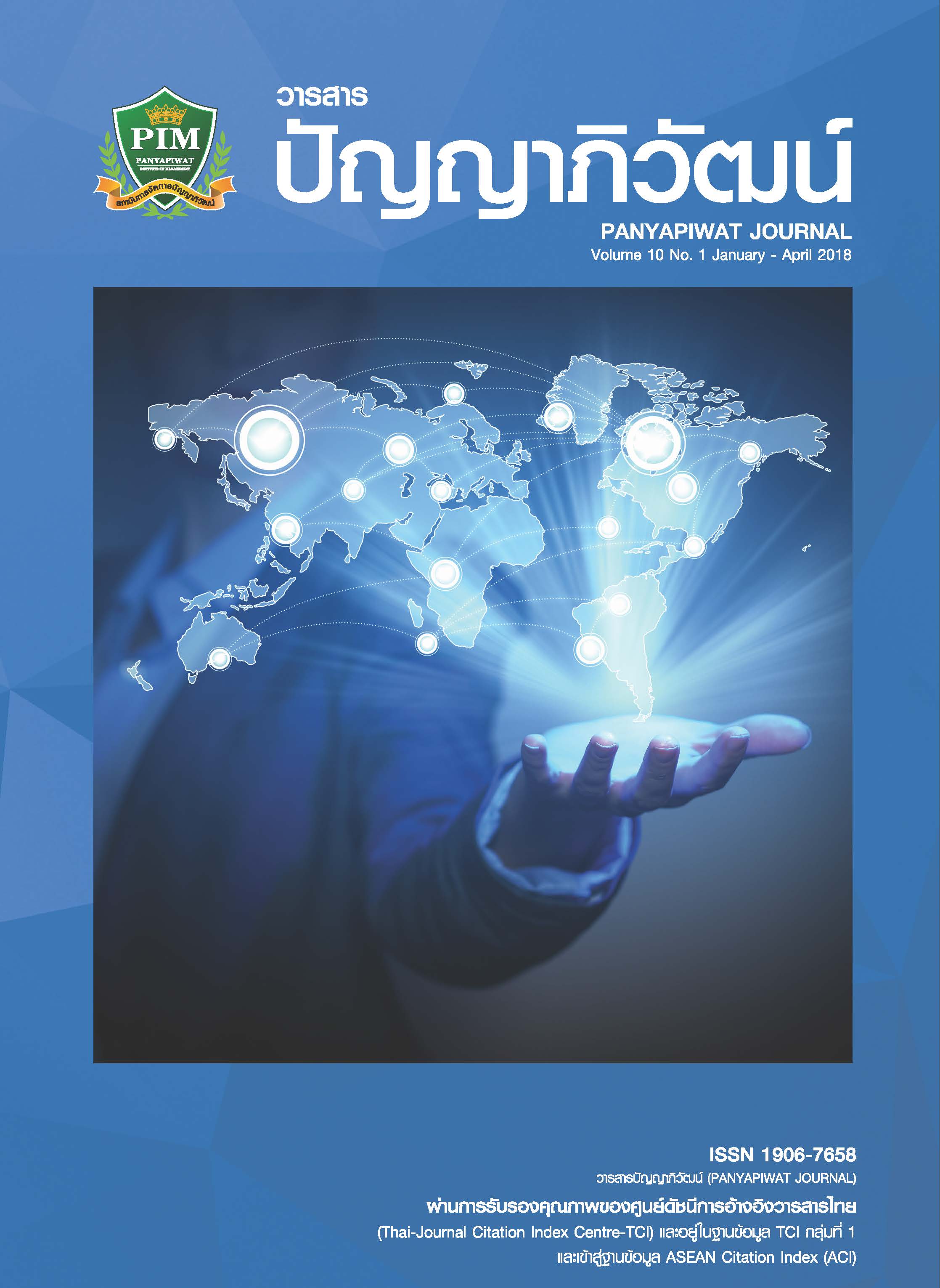Is it suitable to use l1 in the foreign language classroom?
Main Article Content
บทคัดย่อ
The use of L1 in a foreign language classroom is both supported and argued by many scholars. The question whether or not to use the L1 in the foreign language (L2) classroom comes from two different theoretical frameworks, namely the interactionist framework and the sociocultural framework. This article shows presents the reasons why some people support the use of the L1 while other people against it based on the two frameworks. Furthermore, the article suggests different approaches on how to use the L1 and the FL to enhance students’ acquisition to use foreign language more effectively.
การใช้ภาษาที่ 1 ในชั้นเรียนภาษาต่างประเทศมีทั้งผู้สนับสนุนและผู้ไม่เห็นด้วย ปัญหานี้มีที่มาจากกรอบแนวคิดทฤษฎีที่ต่างกัน 2 กรอบคือ แนวคิดปฏิสัมพันธนิยมและแนวคิดสังคมวัฒนธรรม บทความนี้นำเสนอเหตุผลว่า ทำไมคนบางกลุ่มสนับสนุนการใช้ภาษาที่ 1 ในชั้นเรียนภาษาต่างประเทศและทำไมคนบางกลุ่มจึงคัดค้านโดยอ้างอิงจากกรอบแนวคิดทั้ง 2 กรอบ นอกจากนี้ในบทความมีการเสนอแนะแนวทางในการเรียนการสอนโดยใช้ภาษาที่ 1 ร่วมกับภาษาต่างประเทศเพื่อให้ผู้เรียนมีความสามารถทางภาษามากยิ่งขึ้น
Article Details
“ข้าพเจ้าและผู้เขียนร่วม (ถ้ามี) ขอรับรองว่า บทความที่เสนอมานี้ยังไม่เคยได้รับการตีพิมพ์และไม่ได้อยู่ระหว่างกระบวนการพิจารณาลงตีพิมพ์ในวารสารหรือแหล่งเผยแพร่อื่นใด ข้าพเจ้าและผู้เขียนร่วมยอมรับหลักเกณฑ์การพิจารณาต้นฉบับ ทั้งยินยอมให้กองบรรณาธิการมีสิทธิ์พิจารณาและตรวจแก้ต้นฉบับได้ตามที่เห็นสมควร พร้อมนี้ขอมอบลิขสิทธิ์บทความที่ได้รับการตีพิมพ์ให้แก่สถาบันการจัดการปัญญาภิวัฒน์หากมีการฟ้องร้องเรื่องการละเมิดลิขสิทธิ์เกี่ยวกับภาพ กราฟ ข้อความส่วนใดส่วนหนึ่งและ/หรือข้อคิดเห็นที่ปรากฏในบทความข้าพเจ้าและผู้เขียนร่วมยินยอมรับผิดชอบแต่เพียงฝ่ายเดียว”
เอกสารอ้างอิง
Anton, M. & DiCamilla, F. (1998). Socio-cognitive functions of L1 collaborative interaction in Auerbach,E.R. (1993). Reexamining English only in the ESL classroom. TESOL Quarterly, 27, 9-32.
Bruhlmann, A. (2012). Does the L1 have a role in the foreign language classroom? A review of the literature. Retrieved December 12, 2017, from https://journals.cdrs.columbia.edu/wp-content/uploads/sites/12/2015/04/5.-Bruhlmann-2012.pdf
Cook, V. J. (1992). Evidence for multicompetence. Language Learning, 42(4), 557-591.
__________. (1999). Going beyond the native speaker in language teaching. TESOL Quarterly, 33(2), 185.
__________.(2001). Using the first language in the classroom. The Canadian Modern Language Review, 57(3), 402-423.
Edstrom, A. (2006). L1 use in the L2 classroom: One teacher's self evaluation. The Canadian Modern Language Review, 63, 275-292.
Ellis, R. (2008). The study of second language acquisition. Oxford: Oxford University Press.
Eun, B. & Lim, H. (2009). A sociocultural view of language learning. The importance of meaning-based
instruction. TESL Conado Journal, 27.11. 18.
Hellermann, J. & Pekarek Doehler, S. (2010). On the contingent nature of language-learning tasks. Classroom Discourse, 1, 51-40.
Krashen, S. (1982). Principles and practice in second language acquisition. Ocford: Pergamon Liebscher, G. & O'Cain, J. (2005). Leamer code-switching in the content-based foreign language classroom. The modern language joumol, 69,234-247.
Macaro, E. (2001). Analysing student teachers' code-switching in foreign language classrooms: Theories and decision making. The modern language journal, 65(4), 531-548
Macaro, E. (2005). Code-switching in the L2 classroom: A Communication and Learning strategy. Non-native language teachers: Perceptions, challenges, and contributions to the profession, 1, 63-84.
Polio, C. & Duff, P. (1994). Teachers' language use in university foreign language classrooms: A qualitative anayisis of English and target language alternative. The modern language joumol, 78, 159-161.
Savignon, S. (1987). Communicative language teaching. Theory into practice, 26, 235-242. Turnbull, M. (2001). There is a role for the L1 in second and foreign language teaching, but.. The Canadian modern language review, 57, 551-538.
Vaezi, S. & Mirzae, M. (2007). The effect of using translation from Lito L2 as a teaching technique on the improvement of EFL leamers' linguistic accuracy-focus on form. Humanising language teaching, 9(5), September.
Vasatova, G. (2009). Grammar translation method and communicative approach in teaching English. Retrieved November 24, 2017, from https://is.muni.cz/th/152507/pedf_b_a2diplomka.doc
Vygotsky, L. S. (1997). The collected works of S. Vygotsky. New York Plenum Press.
Wiadowson, H. (1990) Aspects of language teaching Oxfort Oxford University Press.


